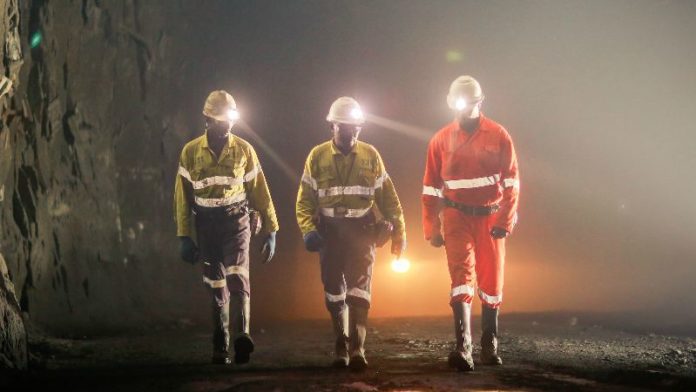
OPTIMISTS and “head-in-the-sand” artists like the National Union of Mineworkers, the Association of Mineworker and Construction Union, and the Department of Mineral Resources, along with various ANC politicians and academic mineral economists, please take note: even the Public Investment Corporation (PIC) reckons what’s left of South Africa’s gold industry has had it.
The country’s gold mines were described this week by PIC mining analyst Lebohang Sekhokoane as “ageing, deep, high-cost and facing uncertain legislation”. I could not have put it better myself – actually I can – “a dead man walking” is the phrase that springs to mind.
Sekhokoane told the Afriforesight Future of Metals conference held in Sandton that the PIC was looking instead at West Africa where the mines are “… shallow, low-cost and operate in investor-friendly environments”.
The reasons why West Africa – and in particular Ghana – is a much better mining destination than South Africa were elaborated on by Gold Fields CEO, Nick Holland, presenting the group’s interim results on Thursday.
He commented: “Ghana’s mining code has not changed in the 26 years we have operated there and the rules are consistent. We don’t have Mining Charter One, Mining Charter Two, Mining Charter Three, and we will be getting Mining Charter Four soon”.
Also strongly in Ghana’s favour is its far more reasonable regulations on employment, in particular the use of contract workers.
Holland also highlighted the “once empowered always empowered” BEE issue which is still being hotly contested between the mining industry and the South African government.
“If mining leases that were originally issued are not going to be respected and people are going to be expected to empower again – (then you have to ask) will people invest?”
To make this “macro” debate more relevant at the “micro” level, let’s look at the two most important mines which will be affected by the way things eventually pan out: Gold Fields’ South Deep and AngloGold Ashanti’s Mponeng.
These have long been touted as the two gold mines which actually have a future in South Africa because they have huge resources – albeit at very deep levels – which could be mined using innovative technology.
AngloGold Ashanti CEO, Kelvin Dushnisky, has put Mponeng up for sale all the while maintaining that the mine still has a great future, just not with AngloGold. But, with all due respect to Dushnisky’s gushing assessment, if Mponeng’s future was that marvellous, AngloGold would not be getting rid of it.
The problem is that Mponeng’s long-term future revolves around investing an unspecified, but huge amount of capital to deepen the mine to extend its life past the current eight or so years.
One the most likely suitors for Mponeng is Harmony whose Kusasalethu mine sits adjacent Mponeng. There are obvious major synergies. But, should Harmony actually get hold of Mponeng, will it invest the necessary capital?
Maybe we will find out more at next week’s Harmony quarterly briefing but I don’t think that money will be invested.
Instead, I believe you will probably see a modified version of the “harvesting” strategy introduced by Steenkamp at Kusasalethu where he chopped the life-of-mine plan to maximise short-term revenues to help generate funds for the proposed Wafi-Golpu gold/copper project in Papua New Guinea.
Harmony, like AngloGold, wants out of South Africa. And while Holland maintains that South Deep can still come right, the fact is that Gold Fields has done infinitely better with its operations in Australia, Ghana and Peru.
Which is why Holland got asked again and again on Thursday the question that irritates him the most: what is Gold Fields going to do about South Deep?
Surely the group should get rid of it? Why on earth keep South Deep given Holland’s scathing assessment of South Africa’s regulatory environment and negative outlook on fundamentally critical operating issues such as soaring power and labour costs?
Holland is an optimist. He replied: “We are not going to do anything from a position of weakness. We have come through a significant restructuring and I still think South Deep could be a true part of Gold Fields. It’s very possible.
“Hopefully, the government, the mining industry, and organised labour will find a way forward with these things. We have to engage and continue to find solutions. We are not just going to throw in the towel and say we are out.”
Hopefully, that “way forward” will be found while there is still something left of South Africa’s gold industry to take advantage of it.








